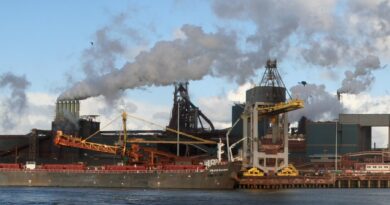Renewable energy is converted into hydrogen with platinum PEM electrolysers
According to a recent report the use of green hydrogen as an energy carrier is set to provide a way of transporting renewable electricity over long distances, linking low-cost production sites – regions with an abundance of wind or solar power – with demand centres needing to import green hydrogen.
Hydrogen – especially emissions-free green hydrogen – is an important source of energy in achieving a carbon-neutral economy. To produce green hydrogen, renewable energy is converted into hydrogen through electrolysis, with platinum-based proton exchange membrane (PEM) electrolysers a key technology.
The production of green hydrogen could grow by almost five times to 614 megatonnes per year between now and 2050 to satisfy clean energy demands in a world transitioning to net zero. The global capacity for electrolysers producing green hydrogen needed to meet this demand is forecast to increase from the 300 megawatts installed now to approximately 5,000 gigawatts of electrolyser capacity in 2050. However, this growth potential is predicated on the establishment of a global trade in green hydrogen as a commodity.
Today, the transportation and storage of hydrogen is mainly based on compressed hydrogen, which, due to its low density, needs to be stored at either extremely high pressures (350-700 bar) or as a liquid at extremely low temperatures (-253°C), requiring specialist handling.
An alternative is to first transform the hydrogen into a commodity with a higher density by volume that is easier and more cost-effective to transport, for example ammonia. Ammonia gas can be stored as a liquid at room temperature under a pressure of just 10 bar, or under atmospheric pressure at -33°C. More than 125 million tonnes of ammonia are produced worldwide every year and processed into fertiliser in agriculture or used in chemical processes, among other things.
Using ammonia as a carrier to transport hydrogen enables the use of existing, well-developed supply-chain infrastructure and trading mechanisms. RWE, the multinational energy company, views green ammonia – produced without the use of fossil fuels – as the most competitive hydrogen derivative with the highest level of technological maturity.
There are signs that a global market in green hydrogen or green hydrogen derivatives is emerging, with over 80 announcements between 2020 and 2021 for projects or collaborations that relate to global hydrogen or ammonia trade. Based on these announcements, the most active prospective importers are Germany, Japan and the Netherlands and the most active prospective exporter is Australia. The focus on strengthening Europe’s long-term sustainable security of energy supply has provided additional impetus to the aim of boosting the region’s future hydrogen capability and availability.



